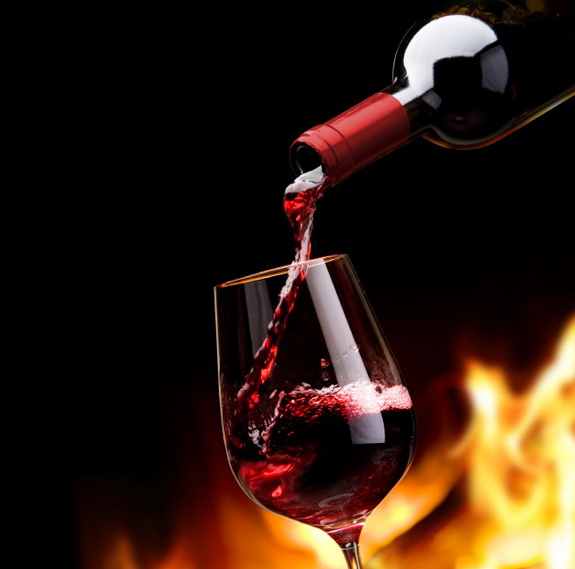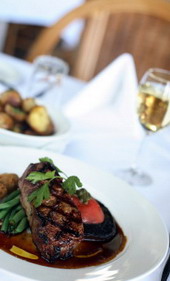 Continued from Part 1 of High Alcohol Wine …
Continued from Part 1 of High Alcohol Wine …
Otherwise, drinkers have to wait years for all of the wine’s disjointed elements to knit together.
They also claim that it’s unfair to judge New World wines by Old World standards. Wines from hot climates, they point out, are being true to their locale by being riper and more alcoholic.
Grapes in these regions, such as zinfandel, shiraz and grenache, only start to express themselves at 14 or 15 percent alcohol. Similarly, chardonnay from these areas at 12 percent alcohol would taste green and stemmy, and is best at 14 and 15 percent.
I disagree; to me those chardonnays taste like rotting bananas.
The price of power is finesse. The best ballet dancers have powerful thighs and calves to lift themselves, but they also have lean arms and beautiful points that create long, elegant lines. I admire this effortless length in wine too.
(Here are my top reviews of wines between 11 and 12% alcohol.)
Of course, some wines have high alcohol for stylistic reasons. Italian amarone, for example, achieves its 14-16 percent alcohol from a traditional process of drying grapes on straw mats before fermenting them to concentrate their sugars and flavors.
The Italians wisely view amarone as a wine to drink at the end of a meal, rather than one to accompany food. They call it vino da meditazione, wine for meditation. This raisining technique is catching on with some New World vintners who now use it on part of their grapes to add power to their wines.
Other wines are naturally powerful too. Chateauneuf-du-Pape, for instance, from the Rhône Valley in southern France, normally clocks in at 13-14 percent.
These wines are made from a blend of up to 13 grapes, including grenache and syrah, that don’t achieve much depth of flavor until they’ve been left on the vine longer than early-ripening varieties. The longer growing period produces more sugar, which converts into higher alcohol.
Some wines can carry more alcohol because their other elements support it, the way tall people more easily hide extra pounds.
Examples include white wines made from grapes such as chenin blanc, marsanne and viognier. Their deep, rich fruit flavors and vibrant acidity balance their strength. Dessert wines too can get away with more alcohol because their sweetness tempers their heat.
Wines with lower alcohol are usually made in cool climates. White wine examples include champagne, along with sparkling wines from other regions; riesling from Washington State, Canada, Germany and Alsace; grüner veltliner from Austria; and muscat from most regions that make it.
Among red wines, examples are pinot noir from Burgundy, Germany, Oregon, New Zealand and Canada; gamay from Beaujolais; cabernet franc from the Loire Valley; and Italian red wines from Trentino-Alto Adige, Friuli and Valpolicello.
Even regions generally considered warm have their cool areas, such as Australia’s Adelaide Hills, Tasmania, and Clare, Yarra and Eden valleys; and California’s Carneros region, the Sonoma coast and the Russian River and Anderson valleys.
Wines from those vineyards often achieve a balancing acidity because their grapes are exposed to the moderating influences of cooling breezes and morning mists from water or mountains.
Some warm regions deliberately create wines with lower alcohol for stylistic reasons, such as Greek assyrtiko and Portuguese vinho verde.
Italian Moscato d’Asti, with its lovely orange-blossom aroma and a light effervescence, is perfect refreshment for a hot summer day. It has just 5.5 percent alcohol.
 However, most of the extremely alcoholic wines today are produced in warm New World regions such as Australia, South Africa, California, Chile and Argentina.
However, most of the extremely alcoholic wines today are produced in warm New World regions such as Australia, South Africa, California, Chile and Argentina.
Modern irrigation technology allows vines to grow in areas that were previously considered too hot. These sun-baked grapes make round, ripe, alcoholic wines.
Another factor is blends versus single-grape wines. French winemakers have traditionally blended various grapes to balance the fruit flavor with the acidity and tannin, whereas many New World producers have promoted their single-grape wines as brands: chardonnay, cabernet and merlot, all with their signature flavors.
These latter wines are often described as “high impact,” “fruit bombs” or “expressive.” Personally, I’ve never liked them because they taste flabby, jammy and dull, like lemonade without the zest of lemons.
Still, it’s unfair to accuse only New World wine of this habit. Many Old World countries, such as France, Italy and Spain, are doing the same today and marketing them as modern, revitalized styles.
Even Bordeaux, that paragon of elegance, has become increasingly alcoholic. In the 1970s, few Bordeaux wines had more than 12 percent alcohol, but that resulted in green, stemmy, underripe wines during cool or wet years.
However, the hot 1982 vintage created a style that was richer and more alcoholic than ever before—prompting U.S. wine critic Robert Parker to declare it the vintage of the century, thereby launching his own professional reputation.
Since then, Bordeaux seems to be averaging 13 percent and higher, especially the expensive “garage wines” made in small lots from Saint-Emilion.
Some drinkers have the misguided notion that all white wines are lower in alcohol than reds. That kind of delusional thinking is why so many people (like me) choose to drink white at lunch, believing that we’re showing some sort of restraint.
Ha.
After just one glass of full-throttle Californian chardonnay (which tastes like tropical fruit salad slathered in butter), I need a nice long afternoon nap. The upside is waking up refreshed just in time for evening cocktails.
A nap is what I could use right now, even though the wine tasting is in full swing and it’s not yet noon. Although I dutifully expectorate each mouthful of wine after I taste it, I do allow a small amount of the best wines to trickle down my throat to test their finish. (I’m very thorough about this sort of thing.)
As well, a little bit of alcohol is absorbed through the skin of my mouth and throat. So for every fifty samples I taste, I probably consume the equivalent of …
Continue to Part 3 of High Alcohol Wine







